Bonsai Techniques
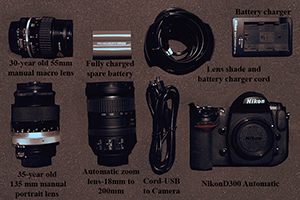
Taking Photos of Bonsai
by Lew Buller
Equipment
Cell phone—If you have a cell phone, you know you can take photos with it. If you have it set up to send email to your computer, you can email the photos to it. Send them as attachments, save them and then open the saved files with a directory search, which should also allow you to preview the photos at full page size. Throw away the bad ones and rename the others to identify their contents. As of early 2015, cell phones can take a 19mb photo.
You may wonder occasionally “How did I get such awful photos?” Here are a few tips that apply to all of the equipment that can be used to take photos:
1. Hold your camera with the back parallel to the subject. If you do not, you will get a “keystone” effect. A keystone is the last stone placed in an arch. It is not square but rather trapezoidal with tapered sides. It transfers weight above the arch to the sides of the arch. Tilting the top of the camera forward while leaving the bottom back allows the bottom to take in more area than the top, creating a keystone effect. Professional photographers use perspective correction lenses or view cameras to get parallel lines.
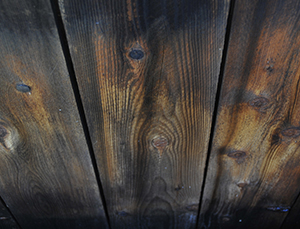
The photo of a section of the fence with no tree in front of it shows what keystoning is. The concern is not with the background, but rather with the fact that the tree will also have the same distortion. If it’s minor, ignore it, but remember, the better the photo you start with, the better the final product will be.
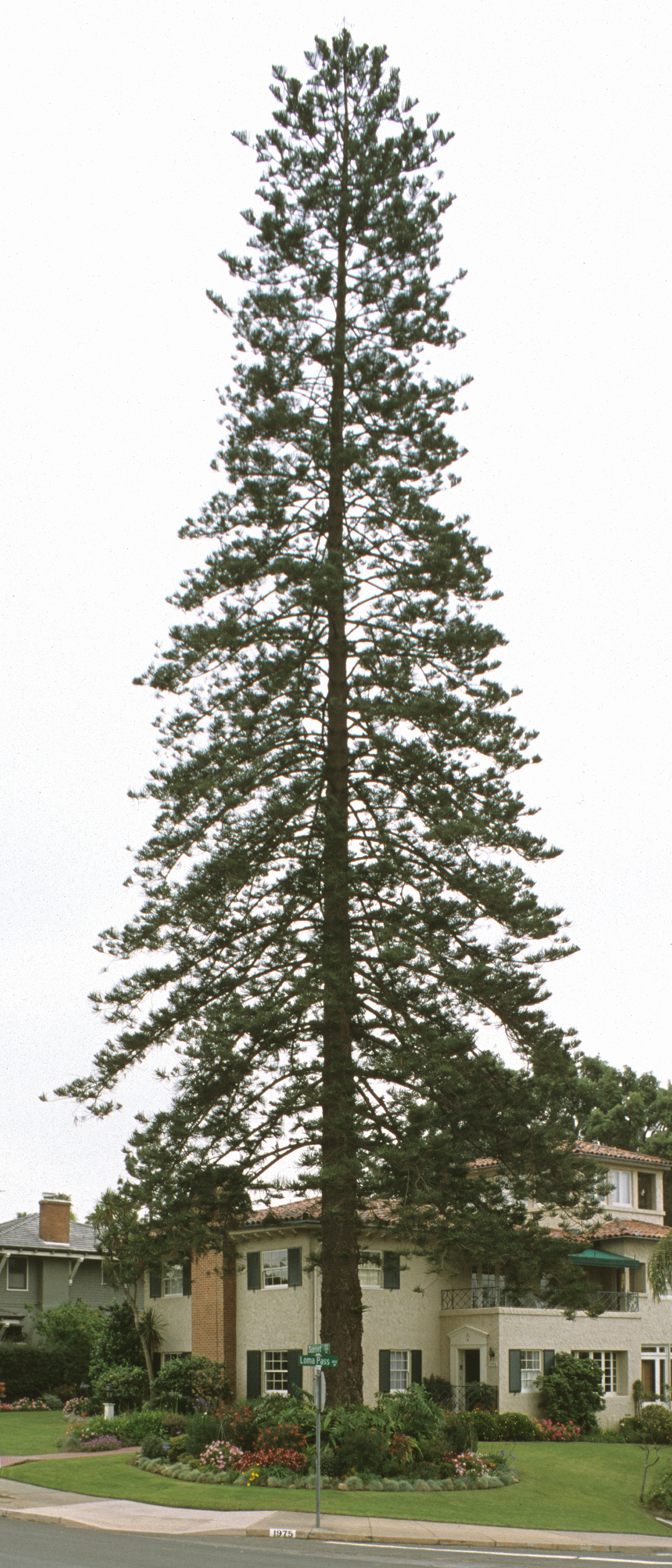
The photo of the tall Araucaria imbricata was taken with a Nikon F3 film camera and a PC lens, but also at some distance from the tree. Up close, the photo would have had a severe keystoning effect.
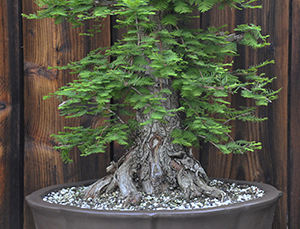
The photo of the bald cypress showing the spaces between boards parallel to one another has no keystoning effect. It also shows something that was not done; the pot was not oiled. When I was told to oil my pots for show purposes, I put a heavy coat of oil on them and that made them glisten. Later I learned to put 3-4 drops of oil on a rag and use that. It removes traces of dust but does not leave a glistening surface.
2. Fill the frame with the subject when you focus and check all four corners of the image. Otherwise, you will get extraneous items that will need to be removed later.
3. Use a flat surface as background. I have used clean white walls, butchers’ paper, and purple velvet as backgrounds. Alternatively, move the tree far away enough from the background that the background is out of focus in the photo.
4. If possible, have the center of the subject at the center of the photo. Bonsai are shown with the trees high enough that they can be viewed from the center. That’s the way the artists designed them. Improvised stands to allow you to do this.
5. Have adequate light. If your cell phone has a flash, turn it off or it will create shadows behind the subject. My favorite light is the diffused light that exists on a cloudy day. No sharp shadows; everything is lit evenly. If you take photos on a sunny day, remember that the color of light changes during the day. Mid-to-late afternoon the light takes on a yellow cast and this will be picked up in the photo.
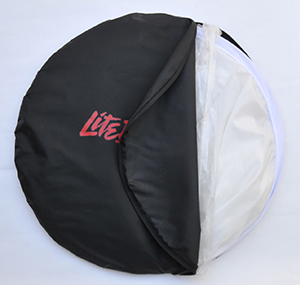
You can also use a reflective “Lite” disk. Used to fill in shaded spots, they are very portable and effective. The reflective surface is available in different colors. Mounted on a spring steel frame, they fold up to be very compact, 20 ½” in diameter. Unfolded they provide a surface of 40 ½” by 75”. The first few times you have to fold it up will be a challenge; you must create 4 coils. (75” divided by 20 ½” equals 4 coils.)
6. Mist the tree foliage with water because it saturates the color. Remember how fresh and green things look after a rain. Avoid wetting flowers. Rain causes flowers to look bedraggled. Use an old towel to keep water from getting on the trunk and pot. Water on the trunk or pot does not saturate the colors; it changes them to a darker hue.
Inexpensive digital camera—If you prefer something simpler to operate, get an inexpensive digital camera. It will come with a cord that will connect it to a USB port on your computer. Many have zoom lenses and autofocus.
Tablets—If you can afford it, you may want to get an iPad or a similar tablet. While they do many things, they also will provide you with high quality photos and the ability to take motion pictures.
Expensive digital cameras—These have many advanced features and will take some time to learn. Their automatic settings can handle a large number of light situations, but manual settings may allow you to adjust for your specific preferences.
Accessories
Tripods—Camera shake often causes photos to be out of focus. Using a tripod eliminates this problem and allows you to use a smaller aperture and a reduced shutter speed. You will get increased depth of field (the distance between the front and the back of the in-focus area) and be able to take photos of smaller parts of the tree.
A unipod may be easier to carry, but is not quite so steady. Tripods range from the simple inexpensive ones to expensive carbon fiber ones, lighter to carry and very sturdy. Some provide for quick mounting of the camera, having a removable fitting that attaches to the camera first.
Background paper—Different size rolls and different colors are available and if you want high quality photos and have the time and space to set up the background paper, use these. Widely available, you can find portable stands that will hold the paper. To get a seamless background, unroll extra paper, bring it forward so a gentle curve is created, and put your tree some distance in front of the curve.
Lighting—Two lights with stands are a minimum requirement to avoid shadows behind the tree. Umbrella reflectors on the lights enable you to control direction. Choose the light source carefully. I got the factory supplied flash rings without noticing they had a 4,2000 Kelvin rating. The result was a slight blue overtone; I exchanged them for 4,4000 set of flash rings and got correct colors. Start your advanced education by learning about Kelvin ratings.

For the record, I bought my equipment slowly over many years–it didn’t ruin my budget for any year or require a loan. It also gave me time to learn how to use the equipment and gain an understanding of color. It was like getting a Christmas present every year. Photography is like bonsai in that there is never an end to learning. If you think you know it all, get a new species of tree or a new piece of equipment. One final piece of equipment. With all the fancy cameras, you will surely need either an aluminum case resistant to damage or a floatable plastic case; both have foam inserts that can be trimmed to fit your favorite photographic toys. Here’s my current traveling case equipment. It’s in a Halliburton aluminum case that I bought with proceeds from sale of a large gingko.
At my age, I have only 2 vices I can indulge in: bonsai and photography. No more wine, women and song.
To get a better picture (pun intended) of the items mentioned here, ask for a catalog (free) from a supplier such as B&H in New York City or go online and check out Keh Camera for both new and used equipment. Show your spouse the next thing you want.
